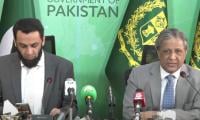The decision by Indian Prime Minister Narendra Modi to withdraw 86 percent of Indian currency notes in a single stroke has badly backfired. The move has left India’s economy crippled and the poorest running from pillar to post in search of cash to feed themselves and their families. There have been protests, of course, most notably West Bengal Chief Minister Mamata Banerjee leading 25,000 protesters against the demonetisation drive. The queues outside banks have remained hours long and dozens have been reported to have died of starvation across the country. It is no wonder that protests have broken out against a decision that was more anti-poor than anti-corruption. The logic that demonetisation in India would end black money and corruption has pretty much been seen for what it is. The rich have always been quick to park any illegally gained cash in gold, real estate, shares and other more stable assets. It is the poor – operating outside the banking system, unable to afford any stable assets – who run their lives on cash.
Even if we forget the suffering of the poor for a minute and focus on the economic side of the move, the cash crisis is set to shrink the $2 trillion Indian economy. The best-case scenario predicted is that India’s economic growth will tumble to five percent this year, as against seven percent last year. Even this is a scenario that seems like an unlikely possibility. For the last three weeks, India’s informal economy has been virtually brought to its knees. The simplest of transactions at a neighbourhood grocer have become impossible due to the cash crisis. Instead of eliminating corruption, Modi could well have ended up putting India on the brink of currency collapse. If nothing else, the Modi government faces its severest test yet. It is no surprise that Modi has used the Pakistan card once again amidst questions on his capacity to actually govern India. Pak-India border tensions have been brought back into the headlines. Pakistan has always been a diversionary tactic for Indian governments but under Modi this strategy has been taken to a level not seen before. Modi has shown how empty his promises of bringing miracle economic growth to India were. The lesson is that desperation cannot be a substitute for coherent policymaking. India would have been better served by fixing its archaic tax apparatus, instead of attempting demonetisation. The impact of India’s self-imposed cash crunch is likely to cast major questions over Modi’s ability to survive in government in the coming days. His popularity has already begun to wane. This might force Modi to chart out a saner course of action.
Every year, millions of girls silently say goodbye to their education and the promise of a better career and get married
Ruling party emerged victorious in by-elections and as per unofficial results has won at least two out of five NA...
According to its organizers, the event now brings together around one billion people across 200 countries every April...
Pakistan’s nuclear programme, it would have threatened peace in the region because of its hegemonic designs
PHF should take comprehensive steps aimed at bringing improvement in the quality of our players
Since its ascent to power in 2014, the BJP, under the leadership of Indian Prime Minister Narendra Modi







